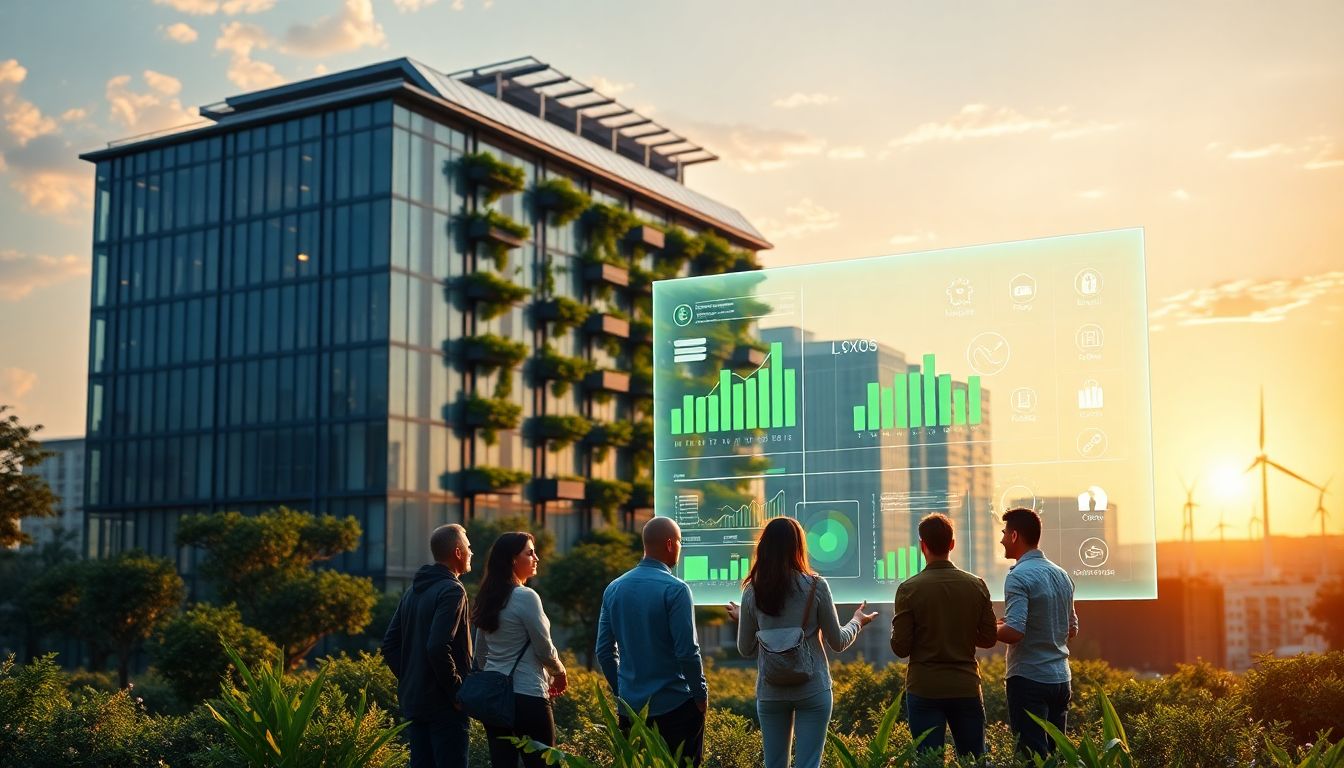
Introduction
As climate change accelerates and resources become scarcer, businesses face mounting pressure to act responsibly. Sustainability is no longer a side project; it’s a necessity for long-term success. Artificial Intelligence (AI) is now changing the game. It offers tools that help companies cut pollution, save energy, and make smarter decisions. Recent reports show AI could be worth over $300 billion in the sustainability space by 2030. That’s a huge boost for companies willing to adopt smart tech. AI can increase efficiency, reduce environmental harm, and spark innovation—key for businesses wanting to thrive without damaging the planet.
Understanding AI in the Context of Sustainable Business
What is AI and Its Core Capabilities?
AI is the tech that makes machines “think” and learn like humans. It includes tools like machine learning, data analytics, and automation. Think of machine learning as teaching computers to recognize patterns. Data analytics helps interpret vast amounts of info. Automation takes over repetitive tasks, freeing up human resources. These skills allow companies to measure their impact better, find areas to improve, and act faster.
The Intersection of AI and Sustainability
AI supports environmental goals, social responsibility, and economic growth—all at once. For example, it helps track carbon emissions, optimize water use, and improve energy efficiency. These efforts align with global goals like the United Nations Sustainable Development Goals (SDGs). When AI is used responsibly, it makes businesses more accountable and aligned with a sustainable future.
Benefits of Integrating AI into Business Sustainability Strategies
Using AI does more than save energy. It helps you:
- Make smarter decisions with real-time data
- Cut costs by minimizing waste
- Improve supply chains for better social impact
- Accelerate innovation for greener products
- Keep ahead of competitors by being eco-friendly
How AI Facilitates Sustainable Business Operations
Optimizing Resource Use
AI can analyze energy data to cut waste in factories, data centers, and offices. Google’s DeepMind, for instance, uses AI to reduce energy use in data centers by up to 40%. This saved millions of dollars and tons of carbon emissions. AI-powered energy systems can also adjust lighting, heating, and cooling based on actual needs, saving resources without sacrificing comfort.
Supply Chain Sustainability
Supply chains are often complex and hard to track. AI makes it easier to know where products come from and if suppliers follow social and environmental rules. Companies like Walmart use AI to optimize inventory, which cuts food waste and lowers pollution from excess shipments. It also helps find eco-friendly sources, making supply chains more transparent and ethical.
Waste Management and Recycling
AI-powered robots are changing waste sorting. These machines quickly identify recyclable materials and sort them with high accuracy. Recycling plants using AI can process waste faster, reduce contamination, and produce cleaner materials. This helps reduce landfill waste and encourages recycling practices.
Monitoring Environmental Impact
Sensors and IoT devices driven by AI give real-time insights into environmental conditions. Farmers use AI to monitor water and fertilizer use, saving resources and boosting crop yield. AI tools also track air and water quality, helping companies react swiftly to pollution issues before they worsen.
Implementing AI to Drive Sustainable Business Growth
Developing AI-Enabled Sustainability Strategies
Start by setting clear goals like reducing emissions or waste. Bring together teams from different departments—IT, operations, and sustainability—to plan how AI can support these goals. Engage with stakeholders, including suppliers and customers, to create a shared vision for responsible growth.
Investment and Resource Allocation
More companies are investing in AI to meet sustainability goals. Data shows that AI spending is predicted to grow 20% annually in eco-focused companies. Allocate budget for AI tools, training staff, and partnering with tech providers to get the best results. Remember, investing now pays off in long-term savings and reputation.
Overcoming Challenges
Common hurdles include poor data quality, ethical concerns, and skills gaps. To address these issues, work with trusted tech firms, train your team, and follow ethical AI standards. Building a strong foundation helps ensure AI tools work well and stay responsible.
Measuring Impact and Success
Use key metrics like carbon reduction, waste decrease, and resource savings to track progress. Tools like dashboards and analytics platforms simplify reporting. Regular review ensures your sustainability initiatives stay on track and deliver results.
Future Trends and Innovations in AI for Sustainable Business
Emerging Technologies and Paradigms
New trends blend AI with blockchain to trace supply chains transparently. Edge AI processes data locally, perfect for nearby resource monitoring or on-site factories. These innovations are making sustainability efforts more efficient and trustworthy.
Policy and Regulatory Environment
Governments worldwide are starting to require more responsible AI use, especially in environmental efforts. Staying updated on laws can prevent costly penalties and keep your business ahead. Implementing compliant AI practices is now a strategic advantage.
Role of Collaboration and Partnerships
Sharing insights across industries and sectors matters. Alliances between companies, governments, and nonprofits help scale sustainable AI projects. Collaboration accelerates innovation and ensures everyone benefits from smarter, greener solutions.
Conclusion
AI is truly changing how businesses approach sustainability. It boosts efficiency, cuts waste, and fosters innovation—all essential for a green future. To stay competitive, companies need to adopt AI-driven tactics, set clear goals, and evaluate their progress regularly. Innovation and collaboration will be key in building a sustainable world. Embracing AI isn’t just about saving money—it's about creating a better planet for future generations. Start now, and watch how AI transforms your business into a leader in sustainability.
